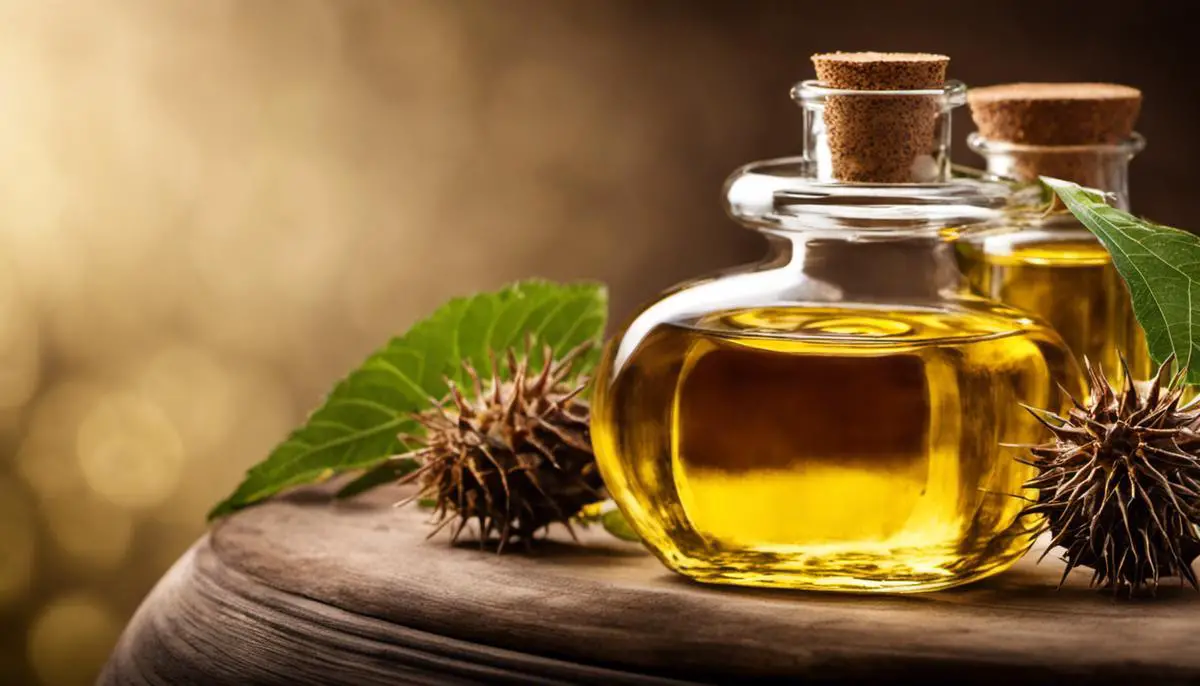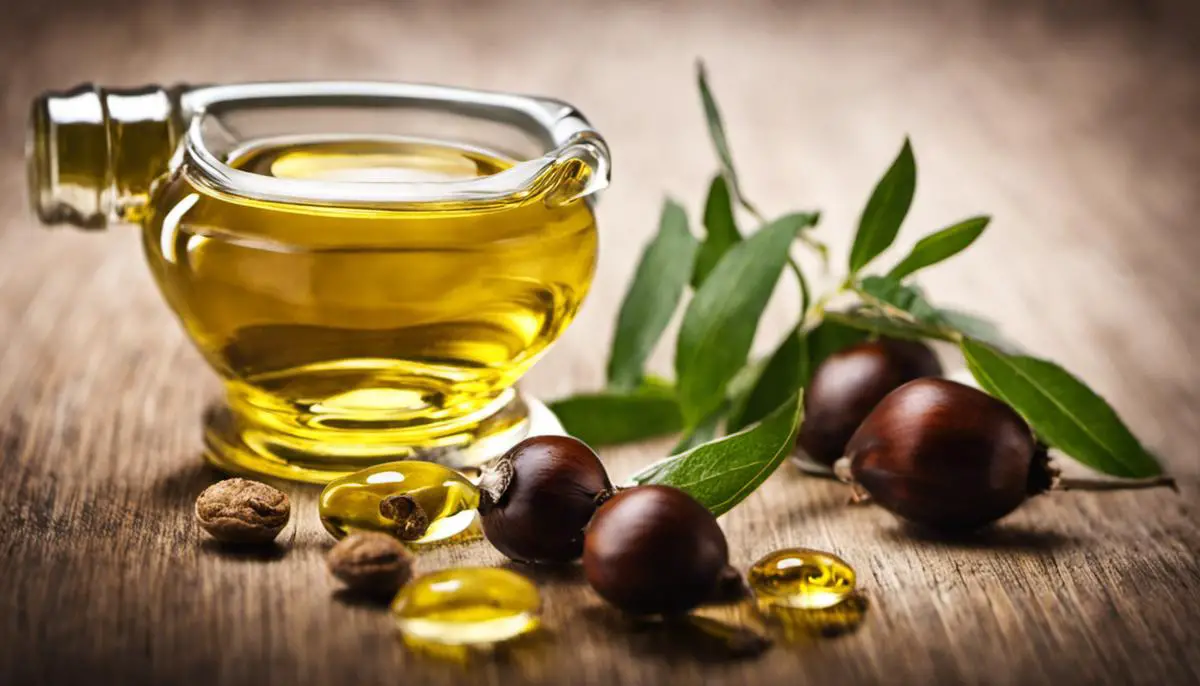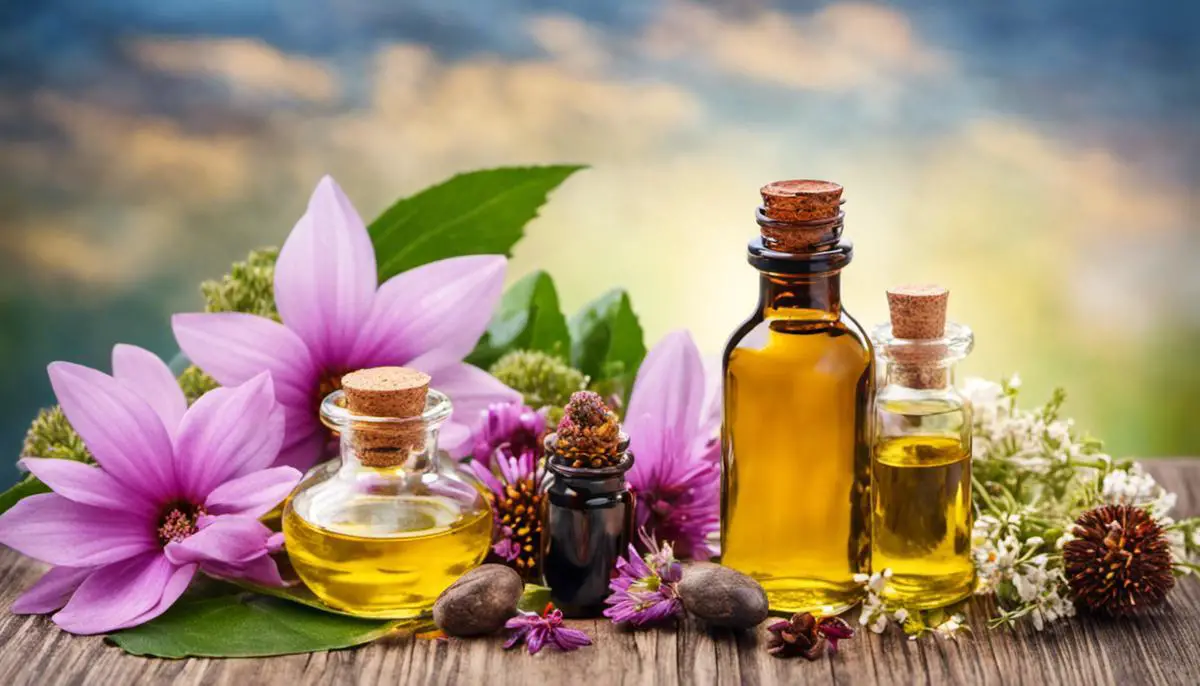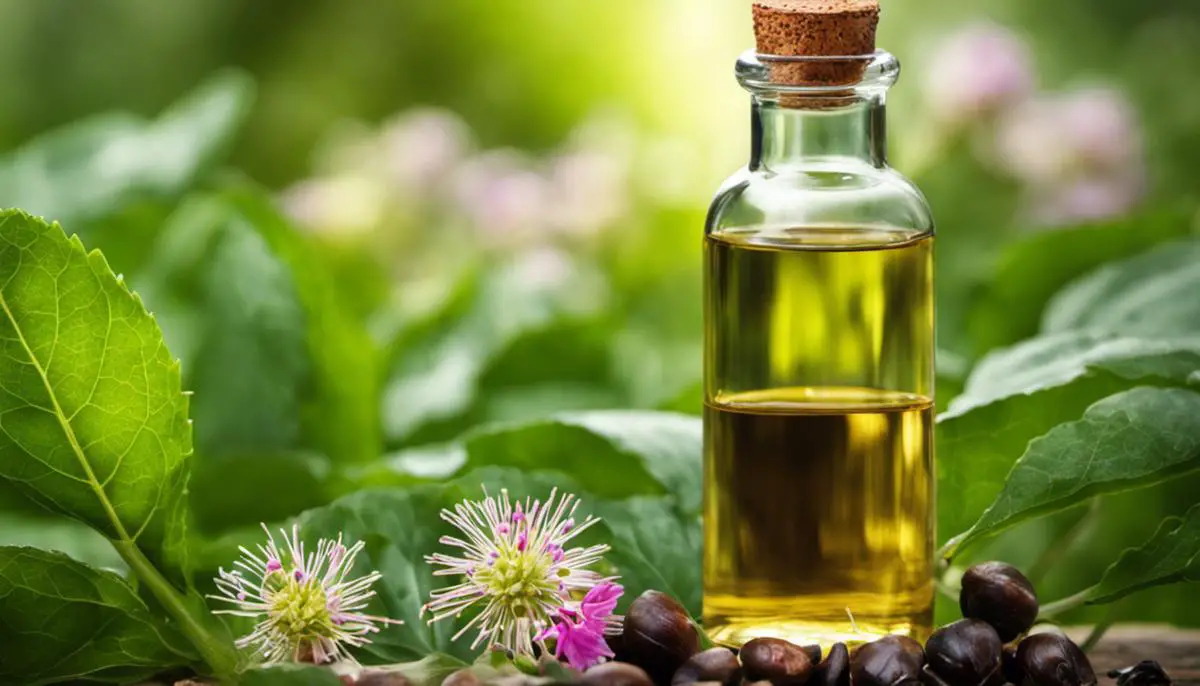Throughout the annals of history, the therapeutic benefits of essential oils have been revered by countless societies and cultures. Among these, a particular oil, derived from the humble castor seed, has proven its worth time and again. This essay embarks on an in-depth exploration into the origins, properties, benefits, and applications of castor oil within the realm of aromatherapy. Equipping the reader with an intriguing glimpse into the historical relevance of this oil, the essay elucidates its unique chemical properties that lay the groundwork for its therapeutic benefits. It evolves into a practical guide for its utilization in an aromatherapy setting and comes full circle with a thorough examination of scientific research backing the advantages of castor oil in aromatherapy.
History and Origin of Castor Oil
Origins of Castor Oil
Castor oil’s history stretches back thousands of years and across many cultures. Derived from the seeds of the Ricinus communis plant, castor oil was first discovered in Africa and the Mediterranean region and was later cultivated in Europe and the Americas. The plant’s stunning red and green foliage made it a popular ornamental plant, but it was the oil from its seed that had the most significant impact on history.
Historical texts and archaeological evidence reveal that castor oil was valued in the wellness practices of ancient groups, including the Egyptians. Archeologists have discovered castor oil in tombs dating back to 4000 BC. They used it for a variety of purposes, including fueling lamps and administering to the sick. There are also records indicating it was used in medicinal practices – it was a common ingredient in ointments and creams and was also used to ease digestive problems.
Traditional Uses of Castor Oil
From the early 17th century onwards, castor oil was introduced to the western world where it was used mainly as a laxative. However, its various therapeutic properties didn’t go unnoticed. It was found to soothe skin irritations, stimulate circulation, and promote wound healing. The oil’s natural anti-inflammatory and antibacterial properties made it a useful tool in addressing a wide variety of ailments.
In traditional Indian medicine, or Ayurveda, castor oil has been greatly revered. It’s applied externally to treat various skin conditions and internally for digestive troubles. It’s also a crucial ingredient in many Ayurvedic oil blends for its believed ability to balance the body’s ’doshas’ or energy principles.
An Exploration of Castor Oil in Aromatherapy
The use of castor oil in contemporary aromatherapy largely revolves around its multifaceted health benefits and its widely recognized role as a carrier oil. A carrier oil in aromatherapy is utilized to dilute essential oils prior to their topical application during massages and other aromatherapy practices. Castor oil, known for its impressive moisturizing abilities, is often the carrier oil of choice.
Combined with essential oils, castor oil can amplify their effectiveness by facilitating more efficient absorption into the skin. The wealth of essential fatty acids that it contains, particularly ricinoleic acid, synergizes with the biological activities of essential oils, thereby increasing their benefits when used topically.
In sum, the role of castor oil in aromatherapy has evolved from its traditional medicinal uses. With expanding applications in the health and wellness sectors, castor oil continues to establish its integral place within the sphere of aromatherapy.

Properties and Benefits of Castor Oil in Aromatherapy
Diving Deeper: How Castor Oil Enhances Aromatherapy
Castor oil, scientifically known as Ricinus Communis, is a naturally occurring plant oil that stands out due to its high ricinoleic acid content- a monounsaturated fatty acid. This unique composition positions castor oil as an indispensable part of skincare routines, credited to its emollient properties, and paves the way for its inclusion in diverse aromatherapy applications. For centuries, dating back to Ancient Egypt, castor oil’s medicinal uses have been widely acknowledged, attesting to its time-tested effectiveness and extensive research backing.
Chemical Composition of Castor Oil
About 90% of castor oil is ricinoleic acid, which is an omega-9 fatty acid. This type of fatty acid demolishes germs, stops the growth of bacteria and viruses, and helps to fight skin disorders and infections. Other active compounds include Oleic Acid, Linoleic Acid (Omega-6 Fatty Acid), Alpha-Linolenic Acid (Omega-3 Fatty Acid), Stearic Acid, and Palmitic Acid. Together, they possess potent antimicrobial properties, which can help to reduce bacterial and fungal issues when applied topically or used as an inhalant in aromatherapy.
Aromatherapy Application of Castor Oil
In the context of aromatherapy, castor oil offers a wealth of benefits by promoting a calming and relaxing environment. It’s traditionally used in a diffuser to help to improve mood, reduce stress, relieve pain, increase energy, and even improve brain function. When used as a base oil or carrier oil, it further enhances the therapeutic benefits of other essential oils by improving their absorption into the skin, increasing their shelf life, and reducing skin irritation.
Exploring the Advantages of Castor Oil in Aromatherapy
Castor oil is noteworthy for its myriad wellness and health benefits, particularly within the practice of aromatherapy. Its prized anti-inflammatory qualities may provide relief for arthritis symptoms, pooling its features as a natural moisturizer to address dry skin ailments. Through stimulating the lymphatic system, castor oil aids in detoxifying the body and fortifying the immune system.
Additionally, when gently rubbed onto the stomach, it’s been linked to resolving digestive problems, possibly easing constipation and fostering overall internal health. Its antimicrobial and antifungal properties provide topical relief for skin conditions like acne or fungal infections.
Castor oil’s impact on hair health is another highlight of its application in aromatherapy, frequently used in scalp massages to stimulate hair follicles and enhance hair wellness. Simultaneously, its calming effects can be instrumental in improving sleep quality, especially when paired with other essential oils such as lavender or chamomile.
While castor oil is typically considered safe, it’s essential to perform a small patch test before widespread skin application, or speak to a healthcare provider or professional aromatherapist to discuss any potential contraindications or specific health concerns.

Usage and Application of Castor Oil in Aromatherapy
Delving Deeper into the Use of Castor Oil in Aromatherapy
Sourced from the beans of the Ricinus communis plant, castor oil boasts a long history of medicinal usage. As a cornerstone of aromatherapy, it functions as a carrier oil, acting as a dilution agent for essential oils before their application on the skin. What sets this oil apart is its high content of ricinoleic acid, a monounsaturated fatty acid that is believed to contribute to the wide array of health and wellness benefits it offers.
Blending Castor Oil with Essential Oils
When used in aromatherapy, castor oil is often blended with other essential oils. Its viscosity makes it an excellent carrier oil, helping to enhance the absorption of other oils into the skin. While there’s no hard and fast rule regarding the exact proportions, a common practice is to use a principal concentration of castor oil, anywhere from 50% to 90%, with the remainder being other essential oils. Keep in mind, the stronger the essential oil, the less you need to add.
If you’re new to this practice, it may be beneficial to start with a lower concentration of essential oils, gradually increasing the amount until you find a blend that works best for you. Always conduct a patch test beforehand to eliminate the possibility of an allergic reaction.
Safe Application of Castor Oil
Like any therapeutic oil, safe application is vital when using castor oil. It is recommended that you dilute it with another carrier oil before applying it directly to the skin. As with all essential oils and carriers, the optimal dilution depends on various factors including your overall health, skin type, age, and the application area.
While most individuals can safely apply diluted castor oil to the skin, there are instances where caution is needed, such as on sensitive areas or broken skin. Also, experts advise against using castor oil in aromatherapy for those who are pregnant or breastfeeding unless under professional supervision.
Utilizing Castor Oil in Aromatherapy: Various Methods
- Massage Therapy: Owing to its rich viscosity, castor oil serves as an ideal oil for massages. It not only minimizes friction, but it also penetrates deep into the skin, providing internal nourishment.
- Hot Castor Oil Pack: This technique involves applying a warmer cloth soaked in castor oil to a specific region, typically the abdomen. It’s purported to improve circulation and stimulate the healing of tissues and organs beneath the skin.
- Skincare and Haircare: The hydrating and nourishing capacities of castor oil make it a beneficial component in skincare and haircare routines. As a hair oil treatment, it can foster healthier, shinier hair.
- Diffusion: While less prevalent, adding a couple of drops of castor oil to a diffuser is an option. Castor oil isn’t famed for its scent, but it acts as a fantastic agent for diffusing other essential oils.
Don’t hesitate to explore the multiple ways to employ castor oil in aromatherapy. Always take your personal health circumstances into consideration and seek professional advice if unsure.

Scientific Studies and Research on Castor Oil in Aromatherapy
The Scientific Benefits of Castor Oil in Aromatherapy
The realm of aromatherapy and natural wellness has recognized a multitude of benefits associated with castor oil. Various scientific studies have both directly and indirectly supported such benefits. Castor oil has been in use for medicinal purposes for millennia, but contemporary research is only now beginning to reveal the reasons and methods behind its efficacy.
Analgesic Effects of Essential Castor Oil
One of the primary advantages of using essential castor oil in aromatherapy is its analgesic effect. A study published in the “Journal of Ethnopharmacology” found that the ricinoleic acid in castor oil has notable anti-inflammatory properties. The study involved a test on rat models where topical application of the oil reduced both pain and inflammation.
Antimicrobial Properties of Castor Oil
Castor oil also exhibits antimicrobial traits which is beneficial in aromatherapy treatments. According to a study in the “Journal of Food Science” published research on the anti-bacterial properties of castor oil, documenting its potential as a natural antibiotic. This supports its traditional use in treating skin inflammations and infections.
Relaxation and Stress Relief with Castor Oil
Another aspect of castor oil’s aromatherapy benefits focuses on its potential for stress relief and relaxation. Its soothing fragrance works as a relaxant and aids in reducing anxiety levels. However, specific scientific evaluations on its aromatherapeutic and psychosomatic effects are limited and require further extensive research.
Potential Issues and Contraindications
It’s also important to mention that while many studies have observed promising results of castor oil’s usage in aromatherapy, there are potential side-effects and risks associated. Some individuals may experience allergic reactions to castor oil. For some people, inhaling castor oil can lead to nausea, dizziness, or other gastrointestinal issues. Therefore, it’s recommended to perform a patch test before using it extensively.
In conclusion
The current scientific literature suggests that castor oil has a variety of potential benefits in the context of aromatherapy. But as with any other substance, it should be used with caution and preferably under professional supervision. More in-depth research to further investigate specific mechanisms and potential issues is necessary to provide a more comprehensive picture of the role of castor oil in aromatherapy.

Castor oil, with its rich history and remarkable therapeutic properties, remains an important player in the arena of aromatherapy. Its unique chemical composition and scientifically backed benefits offer a fusion of relaxing and restorative impacts for a wide range of users. When used with an informed and conscious approach, it can create a calming and therapeutic environment. This exploration serves as a testament to castor oil’s lasting contribution to aromatherapy. Ultimately, with its rich benefits and versatile applications, it continues to be an essential asset offering tranquility and restoration in our fast-paced, stress-filled world.
